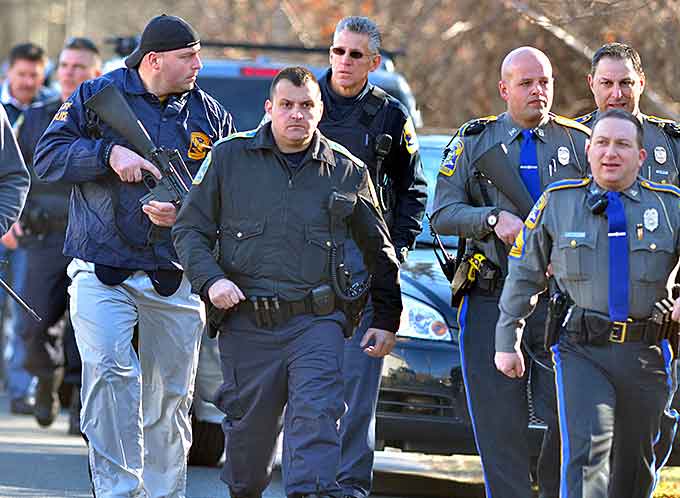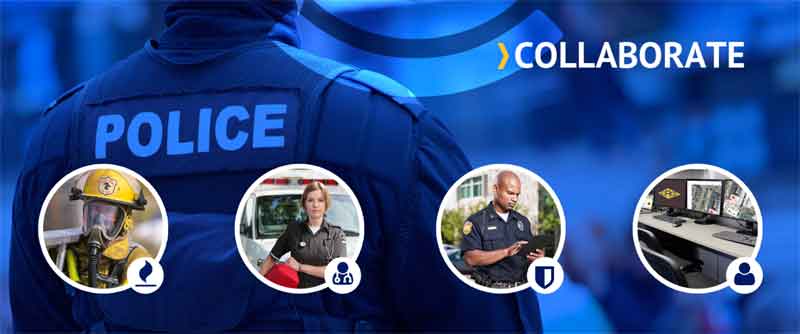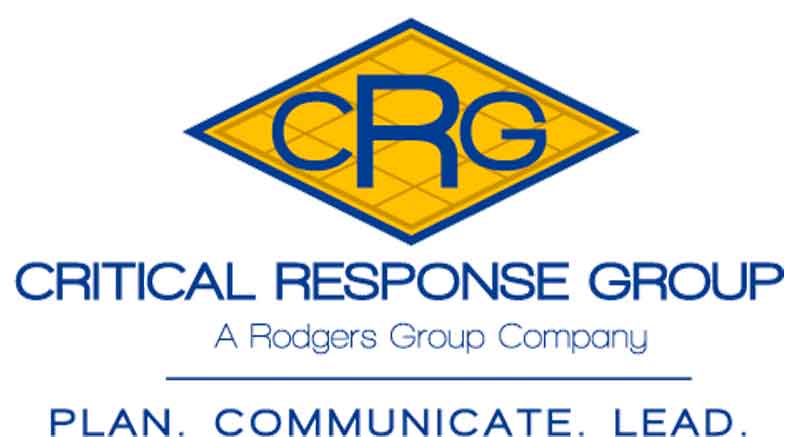
By Keith Germain, COO, Critical Response Group, Inc. and Chief of Police, Barnegat Township Police Department
On February 14th we had yet another mass shooting, this time at the Marjory Stoneman Douglas High School in Parkland, Florida.
Seventeen people were shot and killed, and 15 were injured in one of the worst school shootings in recent memory.
(WARNING: Contains Graphic Images and Content. Several people were killed in a shooting at a high school in Parkland, Fla., Feb. 14. Authorities took one suspect into custody. Courtesy of the Washington Post and YouTube. Posted on Feb 14, 2018)
We could spend tens of thousands of words arguing the societal, cultural, or political reasons that mass shootings have become as ubiquitous as the morning traffic report, but that’s not where my focus is this morning.
My focus today is where it has been through 24 years in various roles as a police officer, SWAT team commander, and now, chief of police:
“How do we improve our ability to stop the threat, help the victims, and save lives?”
Every mass shooting seems to trigger a mass upwelling of outrage and resolve that quickly devolves into a debate over the 2nd Amendment, Rs versus Ds, and whose fault it is that we’ve ended up at this point.

In short, our potential energy and effort quickly enters a death spiral of finger pointing and entrenched positions.
What is too often missed in that cacophony of political and philosophical battles are the lessons waiting to be learned from each incident – lessons that can save lives next time.
And we all know that next time isn’t very far off.
Those lessons are often compiled for us in a painstakingly prepared review and report of the incident – the After-Action Report (AAR).
AARs are an encyclopedia of wisdom.
They are a roadmap to a better response and better outcomes. And we don’t take nearly enough advantage of their existence.
Why do I say that? Because every time I read one, I see the same problems identified over and over again:
- First Responders Unfamiliar with the Location
- First Responders Unable to Accurately Communicate their Position
- First Responders from Different Agencies Unable to Communicate with Each Other
- Confusion Over Where to Set-up Command Posts, Staging Areas, and Triage Locations
- Confusion Over Who is There and Where They Are
- Confusion Over What Areas Have Been Searched and Secured
To demonstrate this, we need look no further than the Sandy Hook After Action Report recently published and released by the Connecticut State Police.
(Learn More. Connecticut’s state attorney has released a new report on the Sandy Hook Elementary School massacre. One area of focus is police response, whether procedures were followed, and whether they were effective. Courtesy of CBS Evening News and YouTube. Posted on Nov 24, 2013)
The comprehensive 74-page report details the challenges faced by responding troopers as they struggled to navigate and search the unfamiliar school and communicate with each other, members of the Newtown Police Department, and other first responders.
The report identifies some specific issues and makes recommendations to mitigate those issues.
In response to troopers being unfamiliar with the location and layout of Sandy Hook Elementary School, recommendation A.R. 17 suggested that troops compile location and floor plan information in one place where it could be easily disseminated to responding troopers.

They further recommended:
“In the event of a major incident, the information will be readily available and can be disseminated to other Troops and given over the air in one broadcast. This material should also be made available in electronic formats for speedier access and dissemination.”

This issue of inaccessible floor plans surfaced again in Issue B.1.3 from the AAR:
“When officers conducted initial and subsequent searches of the school… …neither floorplans nor schematics of the school were readily available for tactical team search units.”
Recommendation B.R.7 in the AAR again suggested that the best approach would be to integrate the floorplans into an electronic format to allow for easy dissemination:
“Consider integrating the building schematics into a readily accessible computer file that can easily be shared with responding units. The E-files can be opened at the tactical or incident command post and coordinated communication between search teams would be able to confirm that all areas have been searched.”

In section B.1.6 of the AAR which dealt with building search issues, the critical importance of having floorplans available was again identified in the mitigating recommendation:
“Coordinate with school maintenance personnel or administrators to obtain building floorplans to ensure all areas are identified and appropriately searched.”
In the summary of recommendations, the report looks at the bigger picture of not just having floorplans available, but also having the preplanned locations of other critical locations such as staging areas and command posts readily available and able to be quickly disseminated:
“Pre-incident planning is critical for active shooter or other mass casualty incidents. Police departments of all sizes must plan in advance for a large-scale critical incident response, including pre-planned mutual aid agreements and mutual assistance. Such planning should include identifying high risk target areas, Building diagrams, appropriate staging areas and command post locations, establishing joint command with local police agencies, fire, and ems…”
(Learn More. What if the emergency management and first responder community was equipped with the defense industry’s most advanced tactical solutions? Courtesy of the Critical Response Group, Inc. and YouTube)
At the end of the day, many of these issues and recommendations are not demonstrably dissimilar from those found in the AARs of many other mass shootings going all the way back to Columbine.
The easiest way for us to leverage these lessons and evolve as first responders is to look at these issues in relation to our own response tools and protocols and objectively assess if the solutions we have in place today would have done the job on that tragic day.
Does your agency and its officers have access to the floorplans of the schools and other pieces of critical infrastructure in your jurisdiction?
Is it in electronic form?
Is it accessible to your officers in the chaos of an incident, or are several steps required to disseminate it to them?
Are the locations of critical areas and components of your response plan readily accessible and presented in a way that allows first responders from different agencies and disciplines to effectively communicate?
If the answer is no, then the next logical step is to look at the available solutions and find one that checks all the boxes and addresses all the known issues.
Police officers have historically done an excellent job of taking the lessons born out of tragedy and applying them to save our own lives.
Terrible events like The Newhall incident and Grape Street Park murders changed the way we practiced our profession.
It’s time for the lessons of Sandy Hook and other mass shootings to trigger a similar change in how we prepare for and respond to mass shootings.

Keith Germain is COO, of the Critical Response Group, Inc. and Chief of Police, with the Barnegat Township Police Department
Keith has a substantial history of accomplishments and successes during his decades long career in law enforcement and emergency management.
Whether restructuring the personnel allocation system to save hundreds of thousands of dollars or directing the project team that earned international accreditation under CALEA, Keith has time and again accepted management challenges and completed difficult projects ahead of schedule.
As a chief of police and emergency management deputy coordinator with nearly 20 years of supervisory and command experience, Keith has held command positions at innumerable critical incidents from major crimes to large-scale wildfires and Superstorm Sandy.
He has overseen multi-jurisdictional responses and served as incident commander under a unified command structure during hurricanes, floods, winter storms, and wildfires, and has managed the evacuation and repopulation of thousands of residents.
Learn More…
(Learn More. Courtesy of Critical Response Group and YouTube)
Critical Response Group was formed with one purpose: to make the public safer through leveraging the hard-fought lessons learned by the United States Special Operations community during the global war on terror, accomplished primarily through the development of Collaborative Response Graphics™– visual representations of text-based emergency response plans that transform difficult to use written plans into highly-usable, geospatially accurate visual planning and response tools.
Using BAE Systems’ revolutionary GXP geospatial eXploitation products, Critical Response Group transforms text-based emergency action plans into GeoRelevant™ Collaborative Response Graphics™– highly-functional visual planning and response tools.
(Learn More. Experience the speed, precision, and utility of GXP® software in real life emergency/disaster scenarios. Courtesy of BAE Systems GXP and Vimeo)

















